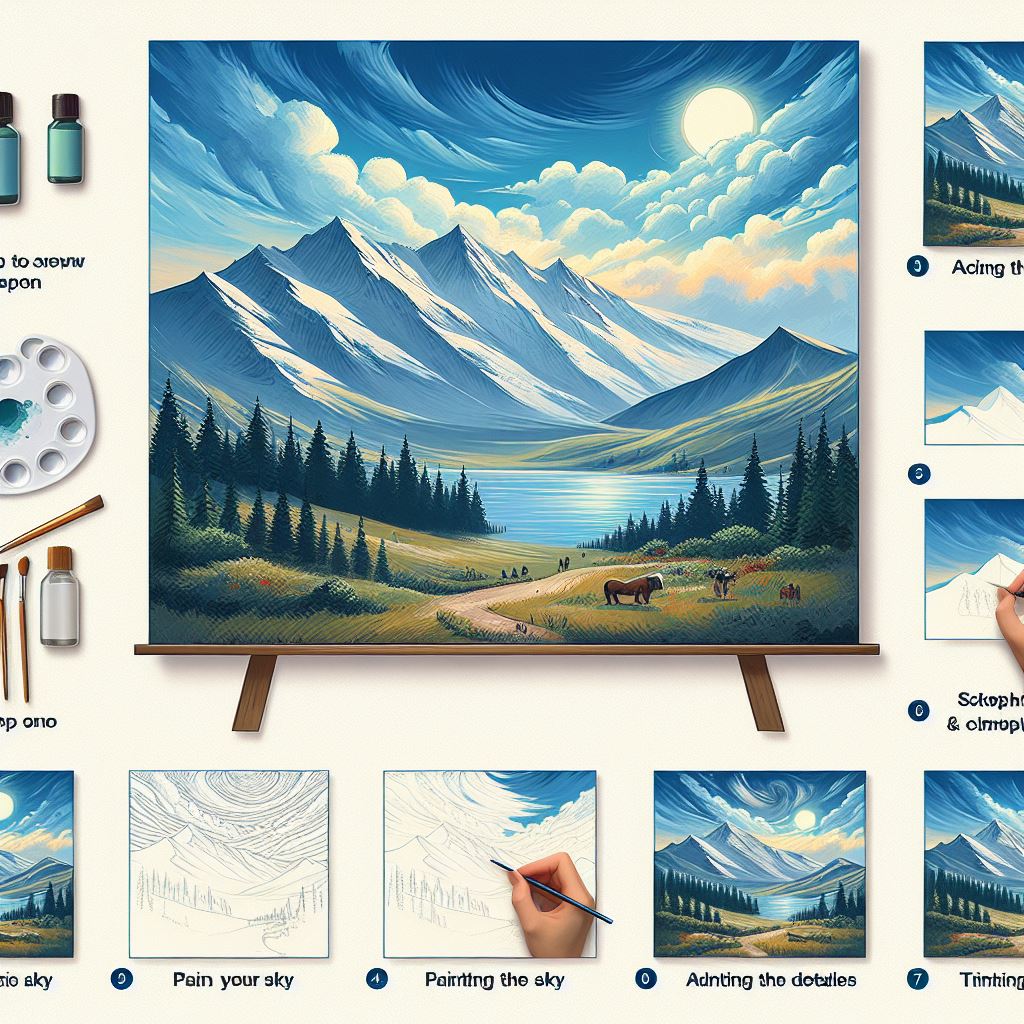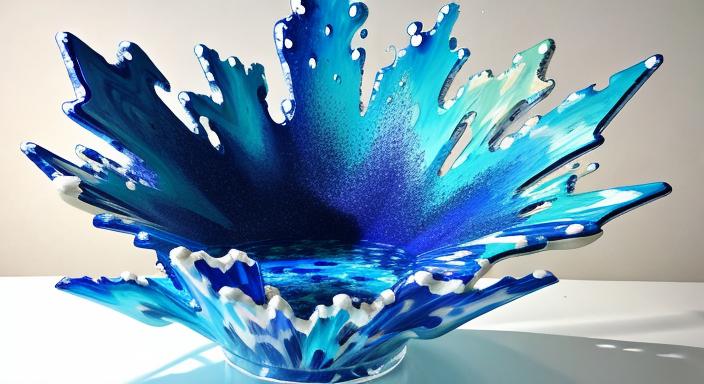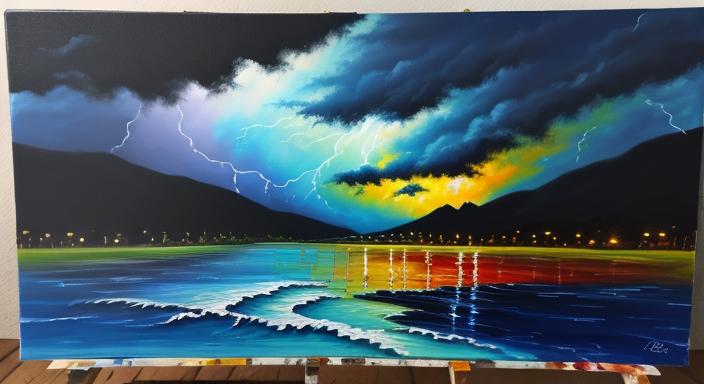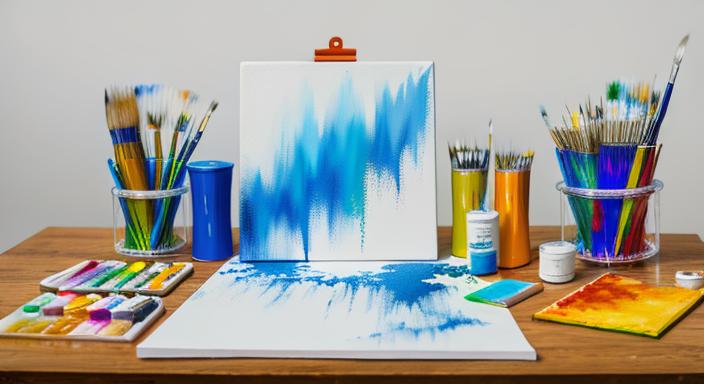Unlock the secrets of acrylic painting and learn how to create stunning artwork on canvas. In this comprehensive guide, we’ll take you through the essential steps, from properly priming your canvas to mastering basic techniques and finishing your masterpiece. Whether you’re a complete beginner or an experienced artist, you’ll discover the tips and tricks to unleash your creativity and produce vibrant, textured paintings that will impress. Get ready to dive into the world of acrylics and transform your canvas into a work of art!

Prepping Your Canvas: The First Step to Acrylic Painting
Acrylic painting on canvas is a popular and versatile art form that allows artists to create a wide range of textures and effects. However, before you start painting, it’s essential to prepare your canvas properly to ensure the best results. In this section, we will discuss the importance of priming your canvas and the best practices for doing so.
The Importance of Priming
Priming your canvas is a crucial step in the painting process, as it creates a barrier between the canvas and the paint, preventing the paint from soaking into the canvas fibres and preserving the life and look of your artwork. Priming also makes the surface less absorbent, allowing your paint to sit better on the surface and reducing the amount of paint needed.
Techniques for Priming Your Canvas
There are several techniques for priming your canvas, including the corner squares technique, the row technique, and the center out technique. These methods involve applying layers of acrylic gesso, clear acrylic medium, or traditional hide glue and oil priming white to create a smooth, even surface for painting.
Choosing the Right Primer
When priming your canvas, it’s essential to use a primer suitable for acrylic painting, such as acrylic gesso or a clear acrylic medium. These primers provide a waterproof surface that allows your paint to spread evenly across the canvas and helps maintain the intensity of the colors.
Tips for Priming Your Canvas
- Always stir the primer container well before use
- Work quickly, as gesso dries fast, and apply each layer evenly
- Lightly sand down each layer after drying before applying the next coat
- Allow the edges of your brush to overlap with the previous, damp strokes of gesso to ensure an even coating
By following these tips and techniques, you can effectively prime your canvas for acrylic painting, ensuring a high-quality, long-lasting artwork.
Selecting the Best Acrylic Paints for Your Canvas
Choosing the right acrylic paints for your canvas is crucial for achieving the desired results in your artwork. In this section, we will discuss the different types of acrylic paints available and how to select the best ones for your canvas.
Understanding Acrylic Paints
Acrylic paints come in various forms, including heavy body, fluid, high flow, and ink Each type has its unique properties and is suitable for different painting techniques and effects.
Choosing the Best Acrylic Paints for Canvas
When selecting acrylic paints for your canvas, consider factors such as pigment quality, lightfastness, and consistency. Professional-grade paints like Liquitex are ideal for both beginners and experienced artists due to their excellent consistency, pigment, and lightfastness.
Tips for Using Acrylic Paints on Canvas
- For detailed work, use a thinner paint consistency
- For creating textures, choose thicker paints
- Experiment with different finishes to find the best one for your project
By understanding the different types of acrylic paints and selecting the best ones for your canvas, you can create stunning, long-lasting artwork.
Basic Acrylic Painting Techniques for Beginners
Acrylic painting is a versatile and accessible art form that allows artists to create a wide range of effects and textures. In this section, we will discuss some basic acrylic painting techniques that beginners can use to create stunning artwork.
Blending Colors
Blending colors is a fundamental technique for creating smooth transitions between colors, often used in skies and sunsets. To blend colors, apply one color to the canvas, then add a second color and gently mix them using a brush or palette knife.
Layering Colors
Layering colors involves painting one layer of acrylic, waiting for it to dry, and then applying another layer on top. This technique adds depth and richness to your painting, as well as allowing you to create vibrant color combinations.
Scraping and Washing Techniques
Scraping and washing techniques can be used to create abstract backgrounds, stars in the night sky, or crisp, clean lines and geometric shapes. To use the scraping technique, apply acrylic paint to the canvas, then use a piece of cardboard or a plastic tool to scrape the paint across the surface. For a wash technique, dilute your paint with water and use a brush to create a transparent effect.
Dot Painting
Dot painting is an ancient technique used in Aboriginal Australian art, where dots are created by using a pouring medium to make the acrylic paint liquid enough to pour, then pouring it onto the canvas in a circular motion. This technique can be used to create intricate patterns and textures.
Mixing Colors on the Palette and Canvas
Mixing colors on the palette and canvas is a basic technique that allows you to create a wide range of hues and shades. Start by mixing a light color with a darker one, gradually adding more of the darker color until you achieve the desired shade.
Gradients of Color
Creating gradients of color involves blending one color into another, often using a brush or palette knife[3]. This technique is commonly used to create depth and dimension in your artwork.
Impasto Technique
The impasto technique involves applying thick layers of acrylic paint to the canvas, creating a textured, three-dimensional effect. This technique can be used to add depth and interest to your artwork.
Stippling and Dabbing Techniques
Stippling and dabbing techniques involve using a brush or sponge to apply paint in small, dabbing motions, creating a textured effect. These techniques can be used to create a variety of textures and patterns in your artwork.
Using More Water and Stiff Bristles or Paper Towel
Adding more water to your acrylic paint can create a wash effect, while using stiff bristles or paper towels can be used to blot or remove excess paint, creating interesting textures and effects.
Experimentation and Practice
Acrylic painting is a highly experimental medium, and the best way to master these techniques is through practice and experimentation. Don’t be afraid to try new techniques and find what works best for you.
By understanding and practising these basic acrylic painting techniques, you can create stunning, unique artwork that showcases your creativity and skill.
Step-by-Step Beginner’s Tutorial: Painting Your First Acrylic Masterpiece
Now that you’ve learned some basic acrylic painting techniques, it’s time to put them into practice and create your first acrylic painting. In this section, we will guide you through the process of painting a simple landscape scene using acrylics on canvas.

Planning Your Composition
Before you start painting, plan your composition by sketching out your design on paper or directly on the canvas. Consider the elements you want to include in your scene, such as trees, mountains, or a body of water.
Preparing Your Canvas
Prepare your canvas by priming it with acrylic gesso or a clear acrylic medium, as discussed in the previous sections. Allow the primer to dry completely before proceeding with your painting.
Sketching Your Design
Once your canvas is prepared, sketch your design onto the canvas using a light pencil or graphite stick. Be sure to lightly sketch the main elements of your composition, as you will be painting over the lines later.
Painting the Sky
Begin by painting the sky, using a light blue or blue-green color for the base. Blend in white or a lighter blue to create a gradient effect. Use a soft brush or palette knife to create a smooth, blended effect.
Painting the Landscape
Next, paint the landscape elements, such as trees, mountains, or a body of water. Use different shades of green, brown, or blue to create depth and dimension. Use the blending and layering techniques discussed earlier to create a textured effect.
Adding Details and Texture
Add details and texture to your painting by using a smaller brush or palette knife to create fine lines and details. Use a variety of colors and techniques to create depth and interest in your artwork.
Finishing Touches
Once you’re satisfied with your painting, allow it to dry completely before applying a protective varnish or sealant. This will help preserve the life and look of your artwork.
Tips for Painting Your First Acrylic Masterpiece
- Start with small, manageable projects and gradually work your way up to larger, more complex compositions.
- Experiment with different colors, techniques, and materials to find what works best for you.
- Don’t be afraid to make mistakes; they can often lead to new discoveries and creative solutions.
By following these steps and practicing regularly, you can create stunning, unique acrylic paintings that showcase your creativity and skill.
Finishing and Protecting Your Acrylic Painting
After you’ve completed your acrylic painting, it’s important to take the necessary steps to protect and preserve your artwork. In this section, we’ll discuss the importance of sealing and varnishing your acrylic paintings, as well as how to properly frame your finished work.
Sealing and Varnishing Your Acrylic Painting
Acrylic paints are known for their durability, but they can still be susceptible to damage over time. Applying a sealant or varnish to your painting can help protect it from UV damage, dirt, and other environmental factors.
There are several types of sealants and varnishes available for acrylic paintings, including:
- Acrylic medium: A clear, glossy medium that can be applied as a sealant.
- Acrylic varnish: A protective coating that comes in matte, satin, or gloss finishes.
- Polymer varnish: A durable, flexible varnish that provides excellent protection.
When applying a sealant or varnish, be sure to follow the manufacturer’s instructions carefully and apply it in thin, even coats. Allow each coat to dry completely before applying the next.
Framing Your Acrylic Painting
Framing your acrylic painting is an important step in protecting and displaying your artwork. When choosing a frame, consider the following factors:
- Frame material: Wood, metal, and plastic frames are all suitable for acrylic paintings.
- Frame style: Choose a frame that complements the style and subject matter of your painting.
- Frame size: The frame should be slightly larger than the painting to create a balanced, visually appealing composition.
When framing your painting, be sure to use archival-quality materials, such as acid-free mats and backing boards, to prevent damage over time. You may also want to consider adding a UV-protective glass or acrylic sheet to the frame to further protect your artwork from fading and damage.
Caring for Your Acrylic Painting
To keep your acrylic painting looking its best, follow these tips:
- Avoid hanging your painting in direct sunlight or near heat sources, as this can cause the paint to fade or crack.
- Clean your painting gently with a soft, dry cloth, avoiding the use of water or cleaning solutions.
- Store your painting in a cool, dry place when not on display.
By taking the necessary steps to seal, varnish, and frame your acrylic painting, you can ensure that your artwork will be protected and preserved for years to come.
Conclusion
Acrylic painting on canvas is a versatile and rewarding art form that allows artists to create a wide range of textures and effects. By understanding the basics of priming your canvas, selecting the right acrylic paints, and mastering essential painting techniques, you can create stunning, unique artworks that showcase your creativity and skill.
Remember, the key to success in acrylic painting is practice and experimentation. Don’t be afraid to try new techniques and find what works best for you. With dedication and a willingness to learn, you can unlock the full potential of this dynamic medium and create paintings that you’ll be proud to display.
So, what are you waiting for? Grab your brushes, paints, and canvas, and let your artistic journey begin!


